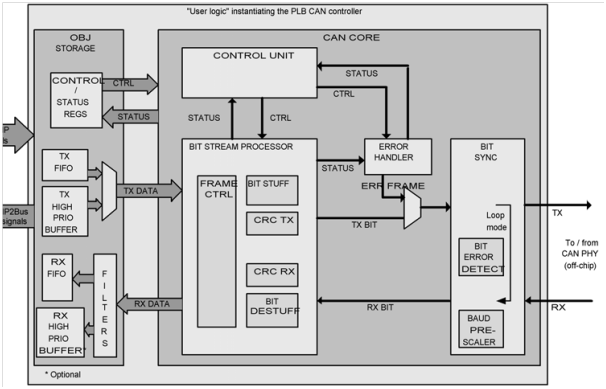Abstract
In today’s world, the communication in a system is computerised in order to reduce the Manufacturing cost and for more reliability. The CAN protocol is the standard for high speed, mission critical, real time control networks in many networks. The CAN protocol is reliable, cheap and last a long time. This project explains the way of designing a CAN module, using the top-down methodology for creation of synthesisable HDL (VHDL) description of the protocol functionality. The project design is simulated and synthesized to get a gate-level net list.
CAN characteristics
- Multiple masters
- Priority –based transmissions: on message ID by node hardware
- All messages are received by all nodes; ID is the priority
- Message filtering: nodes filter messages using Ids before use
- 11-or 29 bit message ID
- Fixes message forms: variable length, to 8 bytes of data
- Built in error detection and recovery
- Guaranteed latency for high priority messages
- High reliability: CRC, message frame check, transmission monitoring
- Bit transmissions to 1Mbps
- Accommodates 100m between nodes (40m at 1Mbps) (M360 CANbus M-module)

